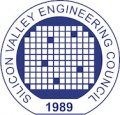Dr. Russell H. Varian 1993

Russell H. Varian was a co-inventor of the Klystron. Working in the physics laboratories at Stanford, Russell Varian did the design and his brother Sigurd built the first model in 1937; they formally announced their invention in 1939. During World War II, they developed radar systems based on the Klystron, earning several patents. The Klystron has played an important part in the development of the microwave industry, and is today used in many diverse applications, ranging from UHF-TV to the Free-Electron Laser. In 1950, the Varians were awarded the John Price Wetherill Medal of the Franklin Institute of Philadelphia “in recognition of their foresight… energy and technical insight in developing… the klystron…”
Russell and Sigurd Varian were co-founders in 1948 of Varian Associates, the first company to occupy a site in Stanford Industrial Park, “spawning ground” of Silicon Valley. Initially, Russell Varian served as President and served on the Board of Directors until his death, also serving as Chairman for several years. Russell Varian obtained numerous patents in other fields, including nuclear magnetic resonance, thermionic tubes, radar and missile guidance, and was the inventor of the free-precession earth’s field magnetometer. He was a Fellow of the Institute of Radio Engineers (now the Institute of Electrical and Electronics Engineers), the American Physical Society, and the California Academy of Sciences, and served as Director of the West Coast Electronic Manufacturers’ Association. He was a member of Sigma Xi and the American Association for the Advancement of Science. He was awarded the Bachelor and Master of Science degrees in Physics from Stanford University and the honorary degree of Doctor of Engineering from Brooklyn Polytechnic Institute.
Sharing a deep sense of responsibility to their associates, Russell and his brother Varian pioneered profit-sharing, stock-ownership, insurance, and retirement plans for employees long before these benefits became mandatory. Russell was a member of the Sierra Club Conservation Committee and, shortly before his death, took steps to acquire land in the name of the Sierra Club for what is now known as Castle Rock State Park.
